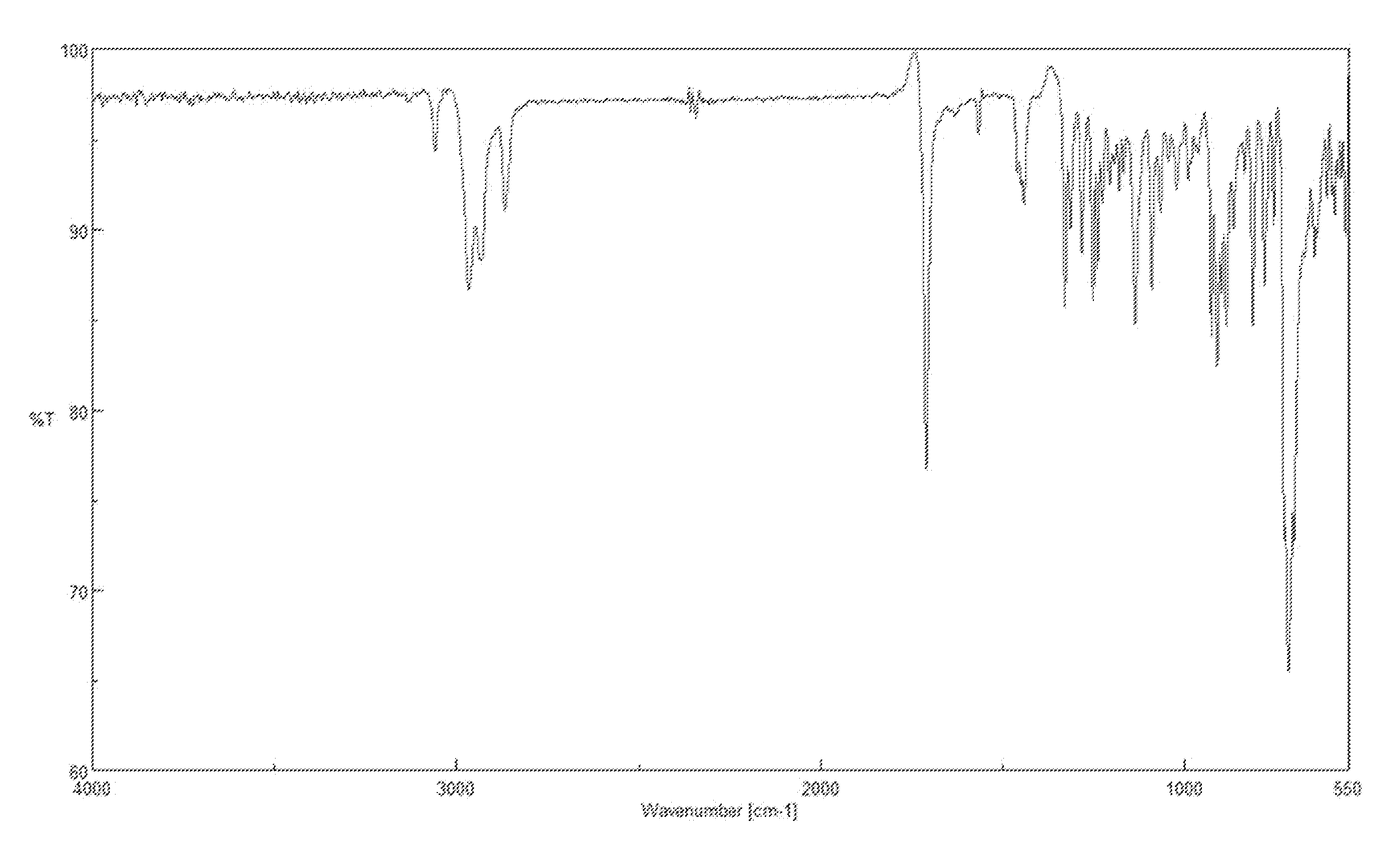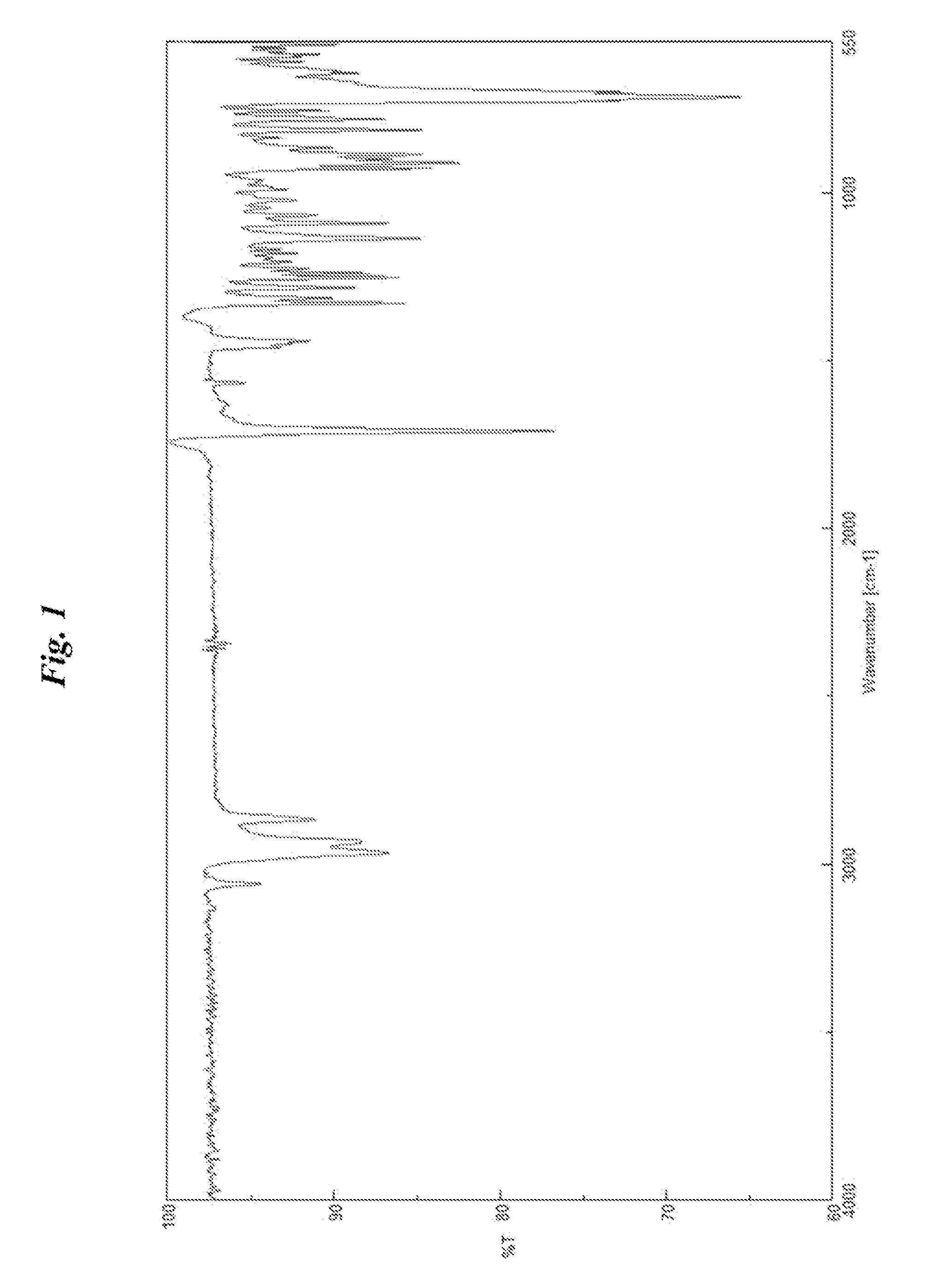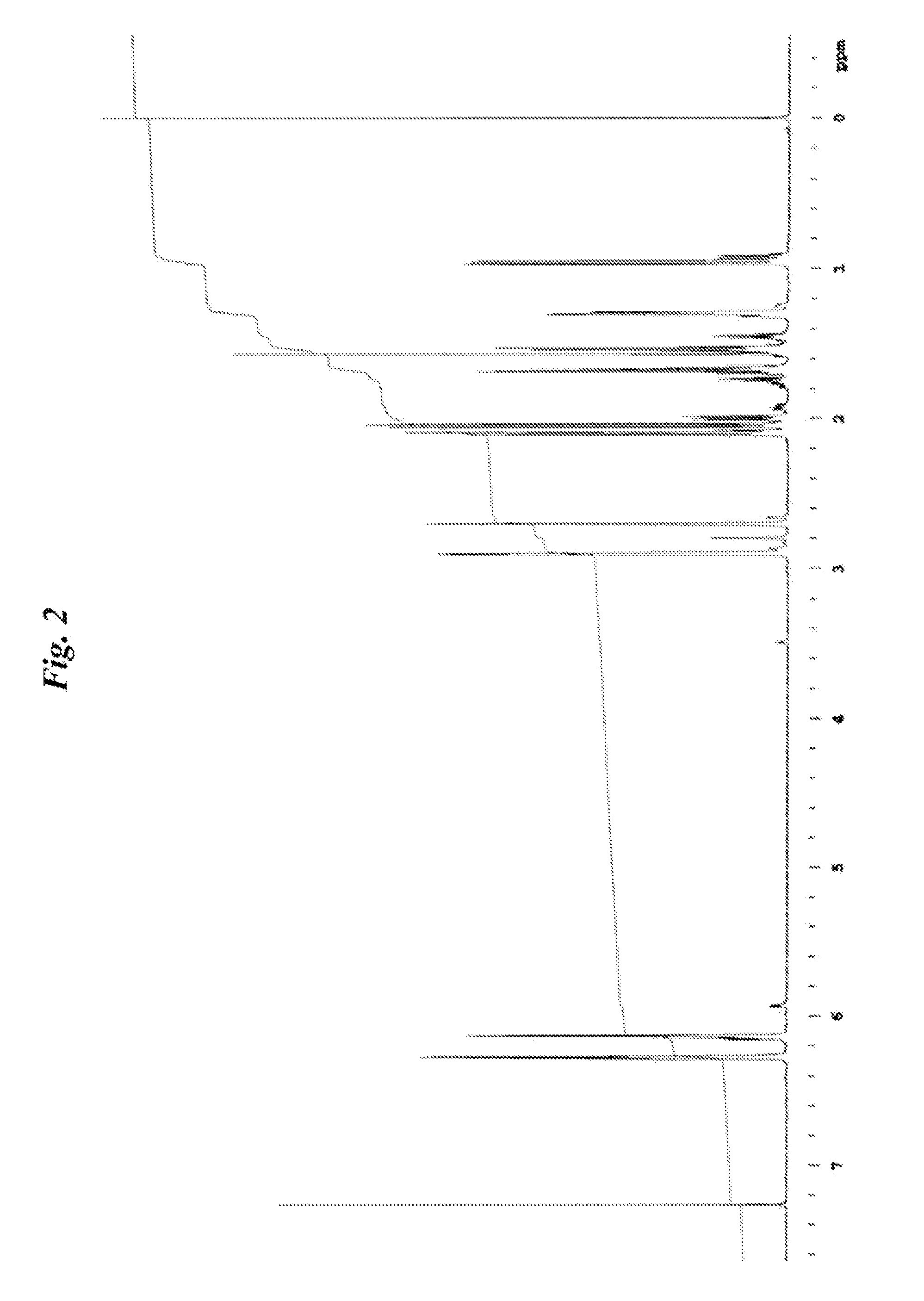Norbornane-2-spiro-α-cycloalkanone-α′-spiro-2″-norbornane-5,5″,6,6″-tetracarboxylic dianhydride, norbornane-2-spiro-α-cycloalkanone-α′-spiro-2″-norbornane-5,5″,6,6″-tetracarboxylic acid and ester thereof, method for producing norbornane-2-spiro-α-cycloalkanone-α′-spiro-2″-norbornane-5,5″,6,6″-tetracarboxylic dianhydride, polyimide obtained by using the same, and method for producing polyimide
a technology of cycloalkanone and dianhydride, which is applied in the field of norbornane-2-spiro--cycloalkanone-′-spiro-2′′-norbornane, can solve the problems of poor soluble dianhydride in solvents, insufficient aromatic tetracarboxylic dianhydride, and low tetracarboxylic dianhydride, and achieves excellent solubility and high light transmi
- Summary
- Abstract
- Description
- Claims
- Application Information
AI Technical Summary
Benefits of technology
Problems solved by technology
Method used
Image
Examples
synthesis example 1
[0205]First, to a 100-ml two-necked flask, 6.83 g of a 50% by mass aqueous dimethylamine solution (dimethylamine: 75.9 mmol) was added. Next, to a 100-ml dropping funnel, 8.19 g of a 35% by mass aqueous solution of hydrochloric acid (hydrogen chloride: 78.9 mmol) was added. Subsequently, the dropping funnel was set to the two-necked flask, and the aqueous solution of hydrochloric acid was added dropwise to the aqueous dimethylamine solution under ice-cooling. Thus, dimethylamine hydrochloride was prepared in the two-necked flask. Next, to the two-necked flask, 2.78 g (92.4 mmol) of paraformaldehyde and 2.59 g (30.8 mmol) of cyclopentanone were further added. Subsequently, a bulb condenser was set to the two-necked flask, and then the inside of the two-necked flask was replaced with nitrogen. Thereafter, the two-necked flask was immersed in an oil bath of 90° C., and heated for 3 hours with stirring. Thus, a reaction liquid was obtained which contained a Mannich base (a compound repr...
synthesis example 2
[0210]First, to a 100-ml two-necked flask, 6.83 g of a 50% by mass aqueous dimethylamine solution (dimethylamine: 75.9 mmol) was added. Next, to a 100-ml dropping funnel, 8.19 g of a 35% by mass aqueous solution of hydrochloric acid (hydrogen chloride: 78.9 mmol) was added. Subsequently, the dropping funnel was set to the two-necked flask, and the aqueous solution of hydrochloric acid was added dropwise to the aqueous dimethylamine solution under ice-cooling. Thus, dimethylamine hydrochloride was prepared in the two-necked flask. Next, to the two-necked flask, 2.78 g (92.4 mmol) of paraformaldehyde and 3.02 g (30.8 mmol) of cyclohexanone were further added. Subsequently, a bulb condenser was set to the two-necked flask, and then the inside of the two-necked flask was replaced with nitrogen. Thereafter, the two-necked flask was immersed in an oil bath of 90° C., and heated for 4 hours with stirring. Thus, a reaction liquid was obtained which contained a Mannich base (a compound repre...
example 1
[0215]A mixture liquid was obtained by introducing the 5-norbornene-2-spiro-α-cyclopentanone-α′-spiro-2″-5″-norbornene obtained in Synthesis Example 1 (2.00 g, 8.32 mmol), methanol (800 ml), sodium acetate (7.52 g, 91.67 mmol), CuCl2(II) (8.95 g, 66.57 mmol), and PdCl2 (34 mg, 0.19 mmol) into a 2-L four-necked flask. Then, the atmosphere inside the flask was replaced with nitrogen. Next, a reaction liquid was obtained by vigorously stirring the mixture liquid for 1 hour under conditions of 25° C. and 0.1 MPa, with carbon monoxide (3.2 L) being introduced into the flask by using a balloon. Subsequently, carbon monoxide was removed from the inside of the flask, and methanol was completely removed from the reaction liquid by concentrating the reaction liquid by use of an evaporator. Thus, a reaction product was obtained. After that, chloroform (500 ml) was added to the reaction product, followed by filtration through Celite. Then, the filtrate was subjected to separation using a satura...
PUM
| Property | Measurement | Unit |
|---|---|---|
| concentration | aaaaa | aaaaa |
| Tg | aaaaa | aaaaa |
| Tg | aaaaa | aaaaa |
Abstract
Description
Claims
Application Information
 Login to View More
Login to View More - Generate Ideas
- Intellectual Property
- Life Sciences
- Materials
- Tech Scout
- Unparalleled Data Quality
- Higher Quality Content
- 60% Fewer Hallucinations
Browse by: Latest US Patents, China's latest patents, Technical Efficacy Thesaurus, Application Domain, Technology Topic, Popular Technical Reports.
© 2025 PatSnap. All rights reserved.Legal|Privacy policy|Modern Slavery Act Transparency Statement|Sitemap|About US| Contact US: help@patsnap.com



